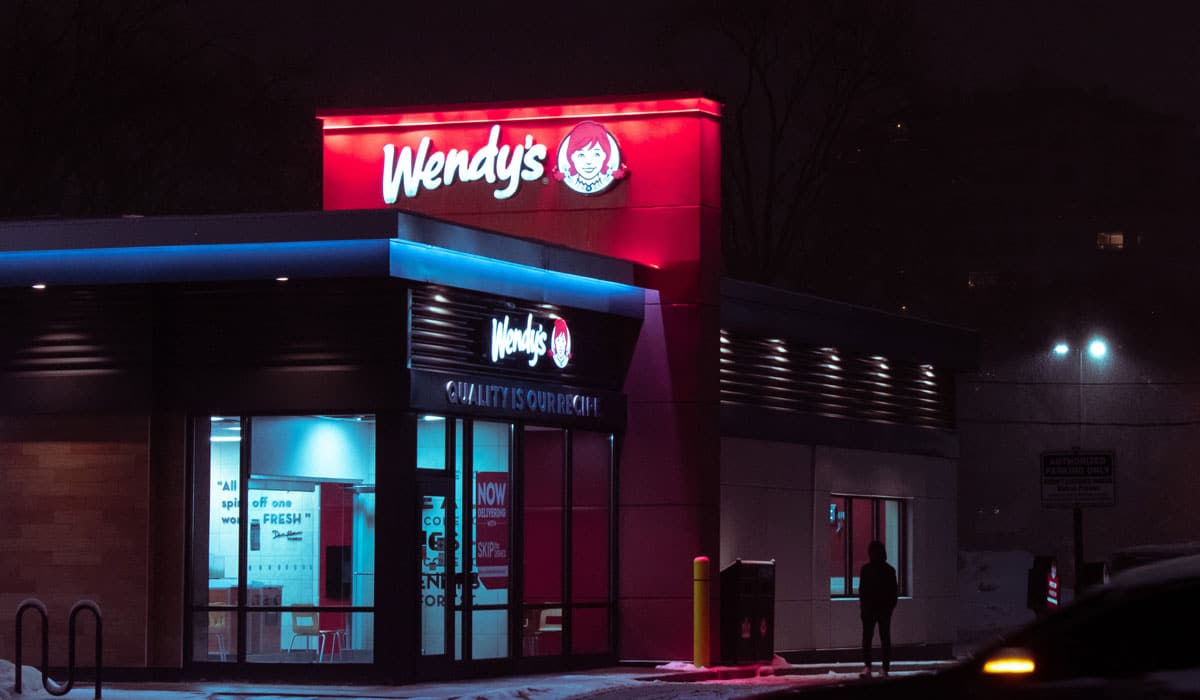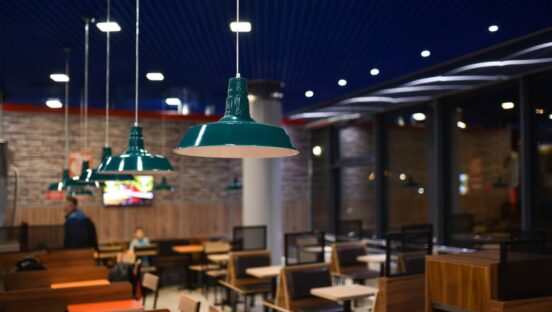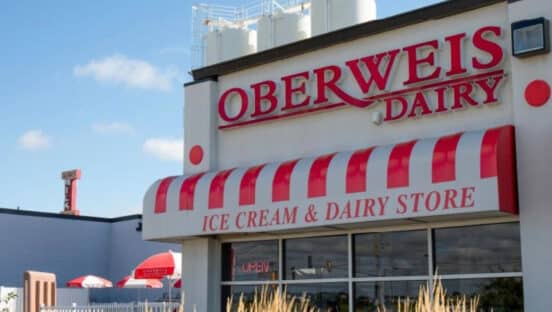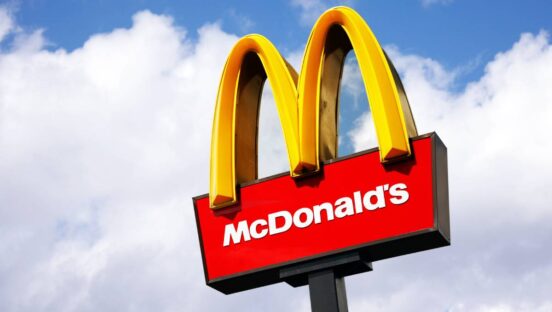If you’ve walked the aisles of a grocery store recently you’ve probably noticed one of two things. Maybe both. Products are hard to come by. And nothing is on sale.
The financial impact of COVID-19 has shifted the core of why people eat. The vast majority of Americans are just trying to put food on the table. So what used to be a multi-factor decision process, everything from flavor to convenience to experience to specific brands, is now rather one-dimensional. Can you get the product? Or can you not?
As budgets get squeezed, these kinds of choices often cut out non-essentials. Restaurants fall squarely into that latter category.
But can that change?
Datassential released its latest 1,000-consumer report Thursday, titled “Money Matters,” exploring how restaurants can begin to address customers’ financial anxieties, understand how people view their situation, where they’ve cut back, and where their money will go when recovery begins.
Here’s the top-flight goal at hand for restaurants, especially counter-service brands that have built legacies around it: Can operators redefine how consumers think about value in the COVID-19 era?
Datassential believes restaurants have a clear path to re-enter the debate by expanding how guests measure value in a coronavirus-battered climate. Simply, think beyond price.
PAST REPORTS
1. Coronavirus & The Impact on Eating
STAY UP TO DATE WITH OUR CORONAVIRUS LANDING PAGE
This was, in reality, a conversation already unfurling across the quick-service lexicon before COVID-19 halted momentum. The race to the bottom, which was so common among the largest chains for decades, was mostly slipping away. Even brands like McDonald’s were designing value offerings to encourage add-on behavior, like its tiered $1 $2 $3 value menu. Deep discounts were becoming more of a check-building strategy or entry point than bottom-line anchor.
That’s not to say value wasn’t still part of the lure of fast food—it was just becoming less essential thanks to a willing consumer and sagging traffic numbers.
For instance, McDonald’s U.S. comparable gust counts declined 1.9 percent in 2019 after falling 2.2 percent in 2018. The figure has tracked negative all but one year since 2012. And yet McDonald’s domestic same-store sales climbed 5.1 percent in Q4, the brand’s best U.S. result in 13 years.
How did it get there? A multi-pronged approach to driving check and capitalizing on a confident spender. Heading into 2020, it was comprised of 60 percent mix and 40 percent pricing. BTIG analyst Peter Saleh estimated an average check jump of 7 percent (4.2 percent menu mix and 2.8 percent pricing). Between delivery, Dynamic Yield-enabled suggestive selling in the drive thru, and self-order kiosks—the central element to the Experience of the Future stores—McDoanld’s was starting to see a much higher number of customers per ticket than it used to.
ARE GROCERY STORES REALLY SAFER THAN RESTAURANTS?
Generally, that was the widespread strategy for quick-serves. Less transactions but larger orders. More premium options on one end of the barbell to balance out promotions and low-priced products on the other designed to get people through the door. Also, fast food has learned throughout the years it can’t afford to push premium at the expense of value. Harmony was the key. That balance was simply become more apparent pre-COVID-19. There remains a very large slice of the population that relies on restaurants for affordable, day-to-day meals. Why can’t that be the case now?
Here’s a May 2019 quote from Wendy’s CEO Todd Penegor: “We still have headwinds for many Americans. Income growth is not equally distributed. Healthcare and housing and rent costs continue to increase and wage growth has not quite kept up with inflation. But the good news is consumer confidence is trending favorable. Disposable income, which [correlates] to our business is moving in the right direction. And we have continued low employment and steady wage growth. So those should all be good trends for our business.”
You can take a lot of those points and forward them to COVID-19 conditions, but with a heavy emphasis on the first part. Discretionary income is evaporating for many families.
This is another quote, from November 2018, that rings some valid points today.
“We’re seeing almost 10 years of economic recovery, we’re seeing lowest unemployment levels in a long time, high consumer confidence and median households finally at record levels,” Penegor said. “But as you look at that income growth, it’s skewed significantly to the higher-income households. You do have a workforce participation remaining well below pre-recession levels. And real wage growth is still not accelerating to the extent that we had all hope for.”
“And on the low end, you start looking at folks with rent and healthcare costs starting to rise that are really eating into some of the headway that they’re making. And remember in [quick service], we got about 40 percent of our customer base that makes $45,000 or less. So that’s why it is so important for all of us in the [quick-service] space to have a really solid high-low calendar to bring folks in, and allow them to mix across the calendar depending on the time of the month.”

That brings us back to the present. Instead of being squeezed out by groceries, what if restaurants could use them to show their superior value, Datassential said.
“They have already taken the first step with limited time offers around pricing, family-sized meals and free delivery. But restaurants can take this one step further by using groceries as a comparative frame-of-reference,” the company said.
How does a restaurant-quality meal, with no delivery fee and no preparation time, discounted for the entire family, now compare to the suddenly higher cost for a grocery basket to prepare the same meal at home? Probably more favorably than most consumers realize.
That idea that eating at home saves money, how viable is it truly right now?
“And once you factor in the stressful shopping experience, time and transportation, value has taken on a whole new meaning,” Datassential said.
Essentially, it might be time for restaurants to treat grocery stores like they have long viewed traditional rivals—bring the message and fight where it matters most to consumers: their wallets.
For more than a third of people, limiting restaurant purchases and cooking at home seems the most popular strategy to save money post COVID-19, Datassential found. Beyond this, though, all other strategies are viewed somewhat similarity in consumers’ eyes.
Meanwhile, 35 percent of Boomers, many of whom are less worried about their financial health when the crisis clears, are unlikely to adopt any of these money-saving strategies.
“How will consumers save money once COVID-19 and social distancing are eased?”
- Get restaurant food less often: 38 percent
- Find and use more coupons: 23 percent
- Choose less expensive restaurants: 22 percent (this is something for operators to circle as they begin thinking about how to position themselves in the recovery period)
- Choose less expensive menu items: 19 percent
- Order from the “value” / “dollar” menu more: 18 percent (value is not going to be restricted by straight price. Can you feed a family of four on this offer? Questions like that are gaining prominence as people try to cut down trips outside the house. The same will be true in the early days after COVID-19)
- Order delivery less often: 17 percent
- Order carryout instead of dining in: 15 percent
- Order more shared/big bundle items: 15 percent
- Just have water with my meal: 15 percent
- Skip appetizers, side dishes, or desserts: 14 percent
- Skip having alcoholic beverages with my meal: 12 percent
- None of these: 24 percent
An important takeaway might be to let some COVID-19 innovations linger past the date when restaurants start to reopen. Things like bundles and improved curbside offerings and services will still play a vital role for wary consumers. It might even become an ingrained part of the restaurant experience. We just don’t know yet.
Who is going to benefit?
When consumer budgets do loosen up, it appears people will rush back into social environments. This is where full-service restaurants stand to benefit the most, but it could take a while to get there, Datassential cautioned.
People will emerge concerned about ordering too many high-margin ancillaries that sit-down operators historically use to drive up checks, such as alcohol, appetizers, and desserts. They’re a little more likely to cut back on alcohol (either with a meal or going out to bars) and on coffee away from home than they are to add those drinks back into their routines.
Meals from full-service restaurants
- Likely to cut back on if budgets worsen: –19 percent
- Likely to spend more on if budgets improve: 29 percent
Health-focused foods
- Likely to cut back on if budgets worsen: –23 percent
- Likely to spend more on if budgets improve: 22 percent
Fresh prepared foods from the grocery store
- Likely to cut back on if budgets worsen: –12 percent
- Likely to spend more on if budgets improve: 19 percent
Snacks from the grocery store
- Likely to cut back on if budgets worsen: –17 percent
- Likely to spend more on if budgets improve: 17 percent
Upscale/premium brands from the grocery store
- Likely to cut back on if budgets worsen: –20 percent
- Likely to spend more on if budgets improve: 16 percent
Coffee away from home
- Likely to cut back on if budgets worsen: –22 percent
- Likely to spend more on if budgets improve: 16 percent
Convenience/pre-made foods
- Likely to cut back on if budgets worsen: –18 percent
- Likely to spend more on if budgets improve: 16 percent
Appetizers and desserts with my meal
- Likely to cut back on if budgets worsen: –21 percent
- Likely to spend more on if budgets improve: 15 percent
Alcoholic beverages with my meal
- Likely to cut back on if budgets worsen: –22 percent
- Likely to spend more on if budgets improve: 14 percent
Snacks or smoothies away from home
- Likely to cut back on if budgets worsen: –19 percent
- Likely to spend more on if budgets improve: 14 percent
Eating at places where tipping is expected
- Likely to cut back on if budgets worsen: –13 percent
- Likely to spend more on if budgets improve: 14 percent
Going out for drinks
- Likely to cut back on if budgets worsen: –26 percent
- Likely to spend more on if budgets improve: 13 percent
Non-alcoholic beverages with my meal
- Likely to cut back on if budgets worsen: –15 percent
- Likely to spend more on if budgets improve: 12 percent
Meals from limited-service restaurants
- Likely to cut back on if budgets worsen: –11 percent
- Likely to spend more on if budgets improve: 11 percent
None: I would not cut from food budget
- Likely to cut back on if budgets worsen: –18 percent
- Likely to spend more on if budgets improve: 24 percent
The fact those two measures are a wash for quick-serves suggests a quick turnaround. Perhaps not as steep as full service, but also with less ground to make up. Counter-service chains should step right back into consumers’ daily routines. Many have remained there throughout COVID-19.
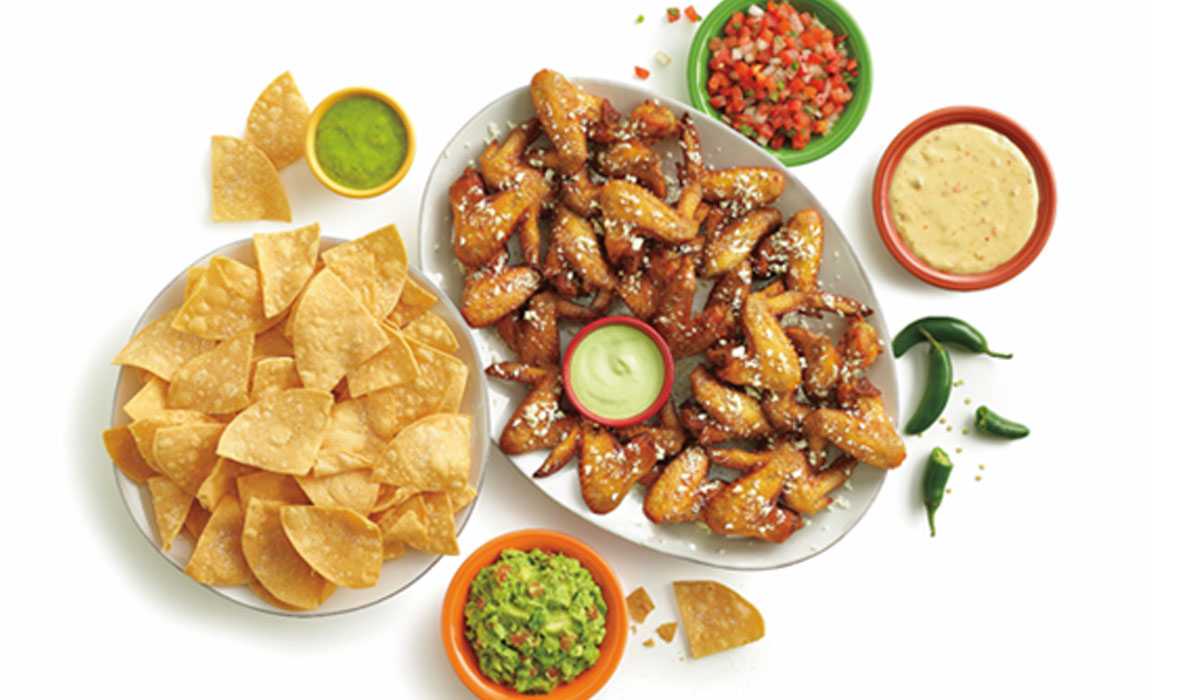
What’s going to come next?
There are plenty of differing opinions about when dine-in service might start opening up. Many peg it as early June. Some later. Yet it’s a pretty universal belief that things won’t snap back to the status quo.
The reality brings up the question, how should operators best prepare for these early days? The easy answer: Treat them like the onset period when COVID-19 first started to disrupt customer behavior, but before the dining room shut downs began.
Even when we’re no longer sheltering in place, Datassential said, nearly three-quarters of consumers across all generations will retain many habits developed during quarantine, from stocking up on essential groceries to being mindful of health and sanitation practices.
Gen Z/millennials and Boomers differ, however, when it comes to money. More than two-thirds of younger consumers are more likely to maintain specific budgets, the company said, adopt frugal tactics, or switch to cheaper brands, compared to fewer than a third of Boomers who would do the same. Boomers are also significantly less likely (73 percent) to order more takeout and delivery post COVID-19—perhaps a lingering attachment to socialized dining, Datassential said.
“Which of these statements will be true when social distancing eases after COVID-19.”
- A restaurant’s cleanliness and food safety will matter more to me after COVID-19: 76 percent (if this isn’t already on the recover whiteboard, put it there).
- I’ll keep a stash of essential groceries on hand, just in case this happens again: 72 percent
- I’ll avoid crowded places: Even if the government says it’s safe, I won’t believe it: 69 percent (this is proof that it might be wise to cut back capacity for a bit. A way to combat the possible sales loss could be to expand hours of operation and grow into other daypart. Say, start a late-night program or promote breakfast heavier).
- I’ll still avoid self-serve food like buffets, salad bars, etc.: 66 percent
- I’ll have a specific budget in mind before going to the grocery store: 56 percent
- I’ll try to save money by buying groceries in bulk more than I used to: 56 percent
- I’ll have a specific budget in mind before going to eat at a restaurant: 55 percent
- I’ll stick with what I know and NOT try new restaurants or menu items: 52 percent
- I’ll maintain my current usage of takeout and delivery: 40 percent
- I’ll switch to cheaper brands of food from the grocery store: 38 percent
Something to remember: Brand loyalty and reputation often trump cost savings, especially with younger consumers. How concepts handled customer communications during COVID-19 will affect sales later on.
Even when social distancing eases and dine-in service resumes, Datassential said, consumers will still cite public health and infection risks as the most salient barriers against eating in a sit-down restaurant. Across all generations, health and safety concerns take priority over economic and lifestyle ones.
While more millennials (33 percent) say they’ve come to prefer home cooking, it’s clear most people miss socialized dining. Only 13 percent said they now prefer getting takeout or delivery.
Again, it’s all about providing piece of mind.
“What will keep consumers from eating at a sit-down restaurant when social distancing has been eased?”
- Health risk / still scared to get infected or spread it to others: 43 percent
- Risk of contact / distance to other people (restaurants will be too crowded): 42 percent
- Risk of contact with staff (people handling my food, they could be sick): 34 percent
- Economic uncertainty / wanting to save money: 33 percent
- I’ve come to prefer cooking and eating at home since coronavirus: 23 percent
- My favorite restaurants closed permanently during social distancing: 21 percent
- Risk of food safety (improper cooking technique / temperature): 17 percent
- Wanting to eat healthy / lose weight (after gaining weight during coronavirus): 16 percent
- No concerns about eating at restaurants after social distancing is eased: 16 percent
- I’ve come to prefer getting restaurant meals to-go or delivered since coronavirus: 13 percent
The good news is the top three points are all things restaurants can address head on through improved operations, training, and direct marketing efforts.
Some more positivity
Despite all their concerns, consumers still expressed willingness to spend more at restaurants once this is over, Datassential’s study found.
Across the board, the most compelling motivation was the desire to help restaurants recover from months of eliminated dine-in traffic and economic instability. This was especially strong among Boomers (41 percent) and less so for Gen Z (23) percent, who gravitated more to trying new and exciting dishes they can’t create at home.
While the differences were small, millennials proved more willing than any generation to shell out for expansive, upscale, healthful, and/or locally sourced ingredients. “No longer just a commonplace activity, dining at restaurants seems more like a luxury with each passing day,” Datassential said.
“Once social distancing eases, what will cause consumers to spend more at restaurants?”
- Wanting to help restaurants and economy recover: 35 percent
- Wanting to socialize more: 25 percent
- Foods I couldn’t easily make at home: 24 percent
- Hosting special occasions at restaurants: 22 percent
- Trying new and exciting dishes: 22 percent
- Tipping servers ore generously than before: 22 percent
- Healthier foods and beverages: 17 percent
- More expensive restaurants that go the extra mile to ensure guest safety: 17 percent
- More expensive restaurants that focus on locally sourced ingredients: 11 percent
- Ordering more expensive menu items: 9 percent
- Alcoholic beverages I couldn’t easily make at home: 9 percent
- Ordering more appetizers and large plates to share with a group: 8 percent
- More premium / upscale ingredients: 7 percent
- Ordering catering from a restaurant at home or work: 6 percent
- None of these: 20 percent
So how will people help out?
It will be vital for restaurants to understand consumers’ desires to assist restaurants. Most will look to things that require little incremental effort, like tipping more. There will be a balancing act between asking consumers for help and just letting it happen.
Half of Boomers in Datassential’s study said they plan to tip more, while nearly half of them would try to visit restaurants more. Gen Z and millennials, generally feeling less financially secure, were more likely to use their social circles on restaurants’ behalf, such as praising a place on review sites or getting bigger groups together to dine out.
This will be a time where understanding your core user is key. Perhaps if you skew younger diners, come up with some promotions or themes around group and social events. Let the user-generated content and engagement chip in.
“How would you be most willing to support restaurants and their staff as they recover from COVID-19?”
- Tipping servers more than before: 43 percent
- Visiting the restaurant more (to give it more business): 37 percent
- Rounding up bill to nearest dollar (to donate to a worker fund): 25 percent
- Giving positive reviews / ratings on sites like Yelp to drive traffic: 25 percent
- Buying gift cards (so restaurants get revenue now): 24 percent
- Going to “Restaurant Week” events set up in town: 20 percent
- Ordering more per meal than normal (to give them more business): 16 percent
- Bringing more people to the restaurant: 15 percent
- Contributing to a “virtual tip jar” for affected employees: 15 percent
- Attending a fundraiser event at the restaurant: 13 percent
- Adding a meal / drink for staff to your bill: 10 percent
- Having a restaurant cater a gathering, instead of cooking yourself: 10 percent
The employee part
Consumers will pay attention to how restaurants treat employees pre- and post-COVID-19. Datassential found that Boomers were most concerned with getting laid-off people back to work. Younger consumers were open to a wider array of tactics. Millennials were more likely to believe front-line staff should be paid like “essential workers,” while Gen Z was even more progressive, ranking health care as their top issue and supporting subsidized child care and unionization for restaurant workers at much higher rates.
- Rehiring laid-off and furloughed workers
- Total: 46 percent
- Gen Z: 20 percent
- Millennials: 39 percent
- Gen X: 46 percent
- Boomers: 62 percent
Paid sick leave for workers feeling unwell
- Total: 33 percent
- Gen Z: 28 percent
- Millennials: 25 percent
- Gen X: 36 percent
- Boomers: 39 percent
Providing health insurance to front-line staff
- Total: 29 percent
- Gen Z: 30 percent
- Millennials: 23 percent
- Gen X: 29 percent
- Boomers: 34 percent
Bonuses for front-line staff 2
- Total: 24 percent
- Gen Z: 21 percent
- Millennials: 27 percent
- Gen X: 22 percent
- Boomers: 24 percent
Raises for front-line staff
- Total: 23 percent
- Gen Z: 20 percent
- Millennials: 26 percent
- Gen X: 22 percent
- Boomers: 21 percent
Scheduling enough hours for front-line staff
- Total: 20 percent
- Gen Z: 18 percent
- Millennials: 19 percent
- Gen X: 24 percent
- Boomers: 19 percent
Letting front-line staff earn paid time off
- Total: 20 percent
- Gen Z: 17 percent
- Millennials: 23 percent
- Gen X: 21 percent
- Boomers: 17 percent
Consistent scheduling for front-line staff
- Total: 19 percent
- Gen Z: 16 percent
- Millennials: 19 percent
- Gen X: 19 percent
- Boomers: 20 percent
Subsidizing child care / leave for parents
- Total: 14 percent
- Gen Z: 26 percent
- Millennials: 16 percent
- Gen X: 13 percent
- Boomers: 9 percent
Automatic tips or service fees to benefit staff
- Total: 13 percent
- Gen Z: 18 percent
- Millennials: 18 percent
- Gen X: 14 percent
- Boomers: 6 percent
Pooling tips for all front-line staff to share
- Total: 12 percent
- Gen Z: 12 percent
- Millennials: 11 percent
- Gen X: 12 percent
- Boomers: 14 percent
Supporting workers’ right to unionize
- Total: 11 percent
- Gen Z: 19 percent
- Millennials: 14 percent
- Gen X: 11 percent
- Boomers: 6 percent
Recruit staff from marginalized groups
- Total: 10 percent
- Gen Z: 11 percent
- Millennials: 17 percent
- Gen X: 8 percent
- Boomers: 2 percent

